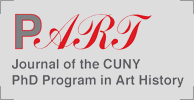|
Special Feature: Latin America: The Last Avant-Garde |
 |
Number 12: (In)efficacy |
|
Editor's Note |
|
|
This issue of PART attends to the question of art’s aspirations and limitations in the face of politics. This question has its origins just prior to the French Revolution in the circle of artists around Jacques-Louis David, who initially supported the upheaval and later found himself caught up in that revolution’s infamous implosion. The Enlightenment notion that art has a role to play in politics has been repeatedly revised during the two subsequent centuries with varying degrees of optimism and skepticism, but it is still very much with us—even if only, as I argue in my contribution, as a “specter” that continually posits, in the words of Jacques Derrida, “the principle of some responsibility, beyond all living present, within that which disjoins the living present, before the ghosts of those who are not yet born or who are already dead…”[1] We are cleaved from Enlightenment, modernist and avant-garde political art by our consciousness of their collective “failure” or incompletion. Before this historical burden, there are two scholarly options: to unearth lesser-known initiatives towards efficacy in the art of the past, and/or to scrutinize the contemporary possibilities for politically efficacious art appropriate to our own historical moment. Toward these two ends, the contributors to this issue explore a diverse selection of work and historic and geographical contexts. Toby Norris reviews the heated and broad debate over politics in art in France’s turbulent 1930s. Kris Belden-Adams, writing about the same period, discusses the American context—the last moment in which our government was truly committed to funding art. My text theorizes the effect of the 1960s and 1970s on our present art-historical thinking. Stephen Gardner looks at the 1990s in newly “democratized” Russia with his discussion of the performance artist Oleg Kulik (an excellent example of the adaptation of 1960s/1970s art practices in the present). Katherine Gressel is also positioned towards this decade in her consideration of the socially oriented, collaborative performance projects of Suzanne Lacy. Siddarth Puri traces the history of queer performance in India—a hybrid of Western conventions and a specifically local response to a sociopolitical issue. Natilee Harren eyes the mega-exhibitions of the 00’s in her discussion of the Utopia Station project, while Amanda Brown critiques a particular case: the New York Museum of Modern Art’s recent acknowledgment of contemporary “Islamic art” in last spring’s Without Boundary: Seventeen Ways of Looking show. Alan Moore, who like myself intuits a “ghost—which we may suspect is ’68-style activism,” outlines the recent artistic tendency to blend art and activism in quasi-academic settings. Finally, overviews of the recent Portraits of Grief project that was installed in the CUNY Graduate Center galleries last year and an interview with the editors of the blog American Coprophagia demonstrate possibilities for new media in the recent American political climate. Contrary to those who would claim that both art and art history are apolitical realms today and that critical theory is “dead” in terms of use value, the heterogeneous methods and subject matter herein attest that the problematic of efficacy remains a trenchant one for both scholars and practitioners of art. New York, NY [1] Jacques Derrida, Specters of Marx: The State of the Debt, the Work of Mourning, and the New International, trans. Peggy Kamuf (New York: Routledge, 1994), p. xix. |